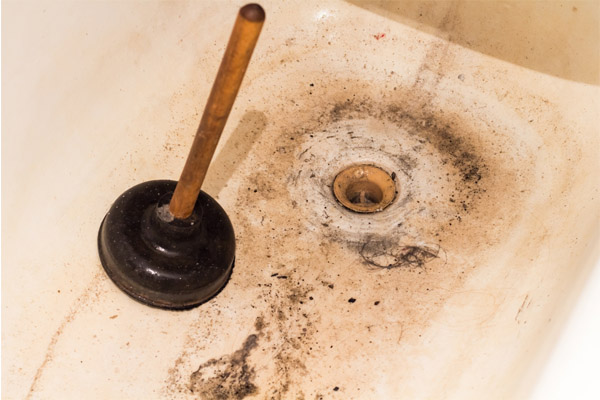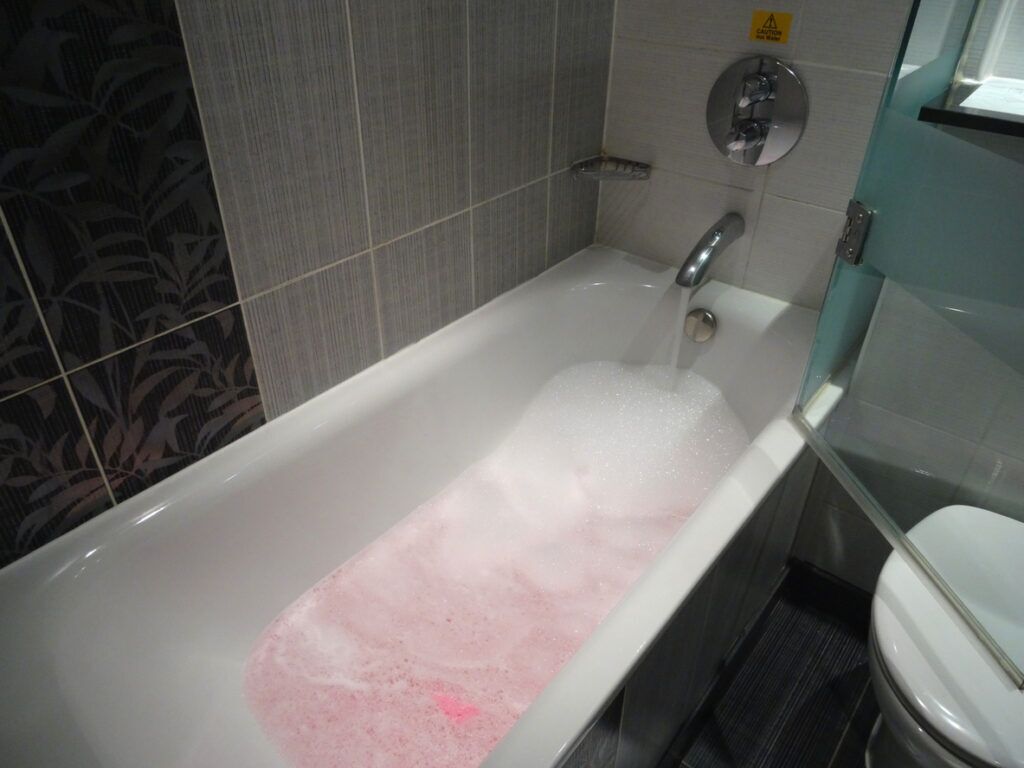Discovering the Causes of Waste in the Bathtub
Discovering the Causes of Waste in the Bathtub
Blog Article
The article down below relating to What To Do If Sewage Starts Backing Up Into the Shower is exceedingly interesting. Read it for yourself and decide what you think about it.

Sewer back-up in the bathtub can be a traumatic and unsanitary issue for any type of property owner. Not only is it troublesome, but it additionally postures severe wellness threats and indicates underlying concerns with the plumbing system. Understanding why sewer is showing up through the bath tub is critical for taking suitable action to address the problem successfully.
Introduction to the Issue
Comprehending the Problem
When sewer draws back up right into the bath tub, it's a clear indication of an issue with the water drainage system. The wastewater that needs to be moving far from your home is instead locating its back right into your space, which can lead to considerable damage and carcinogen.
Potential Causes
A number of elements can contribute to sewage backup in the tub. From obstructions in the sewage system line to issues with the plumbing framework, determining the root cause is essential for locating an option.
Common Factors for Sewage Back-up
Blockages in the Sewer Line
One of the most typical causes of sewer backup is an obstruction in the sewage system line. This can happen as a result of the buildup of debris, grease, or international things in the pipes, stopping proper circulation and triggering sewer to support into your bathtub.
Tree Origin Intrusion
Tree origins looking for dampness and nutrients can infiltrate sewer lines with little fractures or joints. In time, these roots can grow and broaden, creating significant damage to the pipelines and resulting in sewage back-up issues.
Aging Infrastructure
Older homes might have dated plumbing systems that are extra susceptible to corrosion, fractures, and deterioration. As pipelines age, they come to be a lot more prone to leakages and obstructions, enhancing the possibility of sewage backup incidents.
Heavy Rainfall or Flooding
Throughout periods of heavy rainfall or flooding, the drain system may come to be overwhelmed with excess water, creating backups and overflows. This can lead to sewage supporting into bath tubs and various other components inside the home.
Health Threats Associated with Sewer Backup
Contamination of Water Supply
Sewer backup can pollute the water in your house, posturing a severe health and wellness risk to you and your family members. Direct exposure to contaminated water can cause stomach concerns, skin infections, and various other health problems.
Spread of Disease
Sewage contains dangerous germs, viruses, and parasites that can trigger a variety of illness, consisting of hepatitis, cholera, and gastroenteritis. Entering into contact with sewer or polluted surfaces puts you at risk of infection.
Mold and mildew Development
Wetness from sewer backup can create optimal problems for mold development in your home. Mold spores can intensify respiratory issues and cause allergies in sensitive people, making punctual clean-up crucial.
Signs of Sewage Back-up
Foul Odors
Unpleasant odors rising from drains or components, specifically in the shower room, might suggest sewage back-up problems. These odors are commonly solid and relentless, signaling a trouble that requires prompt attention.
Slow Draining Fixtures
Bathtubs, sinks, and toilets that drain slowly or not whatsoever could be experiencing sewer backup. If numerous components are affected all at once, it's most likely that the concern stems from a typical factor, such as the major sewer line.
Gurgling Sounds
Odd gurgling or bubbling sounds coming from drains pipes when water is running elsewhere in your house are a measure of air caught in the plumbing system. This air buildup can arise from sewage backup and need to be explored promptly.
Immediate Actions to Take
Switching Off Water Supply
In the event of sewer back-up, it's necessary to switch off the water supply to avoid additional contamination and damage. Locate the primary water shutoff valve in your home and closed it off up until the issue can be solved.
Contacting a Professional Plumber
Taking care of sewer backup is not a DIY work. Contact a qualified plumber with experience in managing sewage-related concerns to analyze the scenario and perform required repair services or cleanings.
Avoiding Contact with Contaminated Water
Until the sewage back-up is dealt with, prevent contact with contaminated water to stop the spread of bacteria and microorganisms. Wear safety gear if you must be in the affected location and clean your hands extensively afterward.
Safety nets
Normal Upkeep of Sewage System Lines
Arrange routine inspections and upkeep of your sewage system lines to identify and attend to possible concerns before they rise right into major troubles. This can include clearing out debris, inspecting for tree origin breach, and fixing any broken pipelines.
Mounting Bayou Shutoffs
Take into consideration mounting bayou shutoffs in your plumbing system to avoid sewage from flowing back into your home throughout periods of heavy rainfall or flooding. These shutoffs immediately close when water starts backing up, protecting your property from contamination.
Appropriate Disposal of Family Waste
Stay clear of purging anything besides toilet tissue and human waste down the bathroom to prevent clogs and blockages in the sewage system line. Dispose of oil, oil, and other house chemicals correctly to reduce the threat of plumbing problems.
Tidying up After Sewage Back-up
Sanitation Procedures
Completely sanitize and sterilize affected locations after sewer backup to eliminate damaging bacteria and prevent mold and mildew growth. Use appropriate cleaning products and safety gear to ensure risk-free and reliable cleanup.
Remediation of Influenced Locations
Repair any damage to flooring, walls, or fixtures caused by sewage backup. Depending on the extent of the damages, you might need to change carpeting, drywall, or various other products to restore your home to its pre-loss problem.
Why is Sewage Coming Up Through Your Bathtub?
Reasons You May Have Sewage in Your Bathtub
All the drains in your home lead down different pipes to get to the main sewer line. If you’re seeing sewage in the bathtub, the problem is that the main sewer line is clogged up, which is causing the water running through other drains to be pushed back into other pipes. The problem isn’t the bathtub, but the main line. The sewer line can get backed up by anything that goes down the drain, from food waste, hair and soap particles to jewelry or children’s toys. Tree branches or dirt can also impact the sewer line. If you’re seeing sewage in the bathtub, you have a big problem that usually needs a professional plumber. Trying to fix this problem without the right tools or knowledge can lead to bigger plumbing problems.
Fixing a Clogged Sewage Line
Although you shouldn’t try to fix the clogged sewer line on your own, you may be able to mitigate the issue until you can get a plumber to your home. A plunger isn’t going to help, because it won’t be able to reach the sewage drain to unblock the problem.
Turn Off Water
Find the main shutoff valve to your home to turn off the water. This prevents more water from going down the drain which is only going to flow back into your bathtub.
Snake the Toilet and Drain
Start by using a drain pipe snake to clean out the toilet drain. Rotate the snake clockwise when you push the snake down. As you pull it out, the snake should spin counterclockwise. Follow up by snaking out the bathtub drain. If you are successful, both the toilet and shower will drain efficiently. If you’re not successful, you probably have a bigger problem than your tools and experience can manage.
Contact a Professional Plumber
Pros have the tools to find the source of the problem and the experience to manage big blockages without causing more damage to your pipes. It can save you a lot of stress by contacting the professionals sooner rather than later.
Identify the Early Signs of a Clogged Sewage Line
If you’re gearing up for a holiday family gathering or just want to avoid the hassle of a clogged sewage line in your home, make sure you recognize the signs of a clogged sewer line.
Slow drains are a sign of a sewer line problem. Gurgling drains from any drain in your home indicate that you may have an obstruction in the drains. If your toilet keeps getting clogged, it might be a problem with the sewer line. When you see laundry water or water from the dishwasher in different sinks in the home, it’s an indication that your sewer drain is beginning to get backed up. These symptoms can often be “fixed” temporarily to get through a day or week before you start seeing the same problem. When it comes to plumbing problems, you want to fix the root of the problem instead of muddling through. The clog will not go away on its own.
https://handymanconnection.com/mississauga/articles/why-is-sewage-coming-up-through-your-bathtub/

I hope you enjoyed reading our topic about Why sewage is coming up through your bathtub. Thanks for taking time to read our post. Sharing is nice. Helping people is fun. Thanks a lot for your time. Don't hesitate to stop by our website back soon.
Call Us Today
Report this page